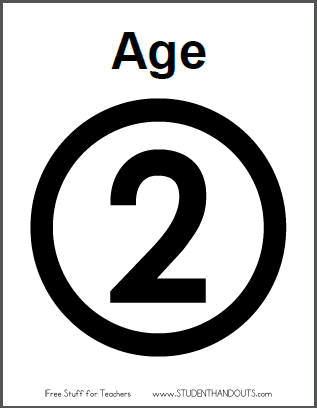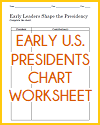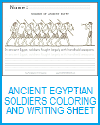| Organizing by Child's Age Classroom Signs |
|---|
| www.studenthandouts.com ↣ Classroom Organization ↣ Classroom Signs |
 |
    |
These free printable sheets allow you to organize areas of a classroom and materials by age. They are highly visible, and can easily be read by all. Some ideas for these include:
Age-appropriate educational materials are important for children's development and learning for several significant reasons. Cognitive Development: Children go through stages of cognitive development as they grow. Age-appropriate materials are designed to align with their cognitive abilities, ensuring that the content is neither too simplistic nor too advanced for their level of understanding. This promotes optimal cognitive growth. Engagement: Materials that are tailored to a child's age and developmental stage are more likely to capture their interest and maintain their engagement. When children are engaged in learning, they are more likely to retain information and develop a love of learning. Effective Learning: Age-appropriate materials are carefully crafted to align with educational standards and learning objectives for specific age groups. This ensures that children are exposed to content that is relevant, meaningful, and conducive to their educational progress. Development of Skills: Educational materials designed for a particular age group target the acquisition of age-appropriate skills, including motor skills, language development, and cognitive skills. These materials provide opportunities for children to practice and develop these skills effectively. Avoidance of Frustration: Materials that are too advanced can frustrate children, leading to a negative attitude towards learning. On the other hand, materials that are too basic may lead to boredom. Age-appropriate materials strike the right balance, preventing frustration and boredom. Social and Emotional Development: Educational materials that are age-appropriate often include content that reflects a child's experiences and emotions. This can support the development of social and emotional intelligence by addressing relevant issues and feelings. Safety: Young children are still developing fine motor skills and may put objects in their mouths. Age-appropriate materials are designed with safety in mind, using non-toxic materials and avoiding small parts that could pose choking hazards. Encouragement of Independence: Materials that align with a child's developmental stage promote a sense of autonomy and independence. Children can interact with these materials on their own, which fosters self-confidence and self-directed learning. Gradual Complexity: Age-appropriate materials are often designed to gradually increase in complexity, building on the child's existing knowledge and skills. This scaffolding approach supports continuous learning and development. Alignment with Educational Goals: Educational programs and curricula are often designed with age-appropriate materials to meet specific educational goals and standards. Using these materials ensures that children are progressing in their learning as expected for their age group. Respect for Individual Differences: Age-appropriate materials respect the individual developmental differences among children. They recognize that children develop at their own pace, and these materials accommodate a range of abilities and interests. Parental and Teacher Support: Age-appropriate materials can facilitate communication between parents, caregivers, and teachers. They help adults select materials that are suitable for a child's age and developmental stage, promoting consistency in educational experiences. Age-appropriate educational materials play a crucial role in supporting children's cognitive, social, emotional, and physical development. They are carefully designed to provide engaging, effective, and safe learning experiences that align with a child's developmental stage, setting a strong foundation for lifelong learning. We hope that our free printable number signs are useful in organizing your educational materials by age! |
| www.studenthandouts.com ↣ Classroom Organization ↣ Classroom Signs |








